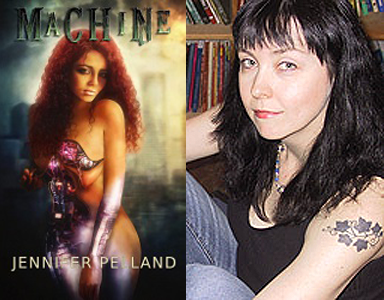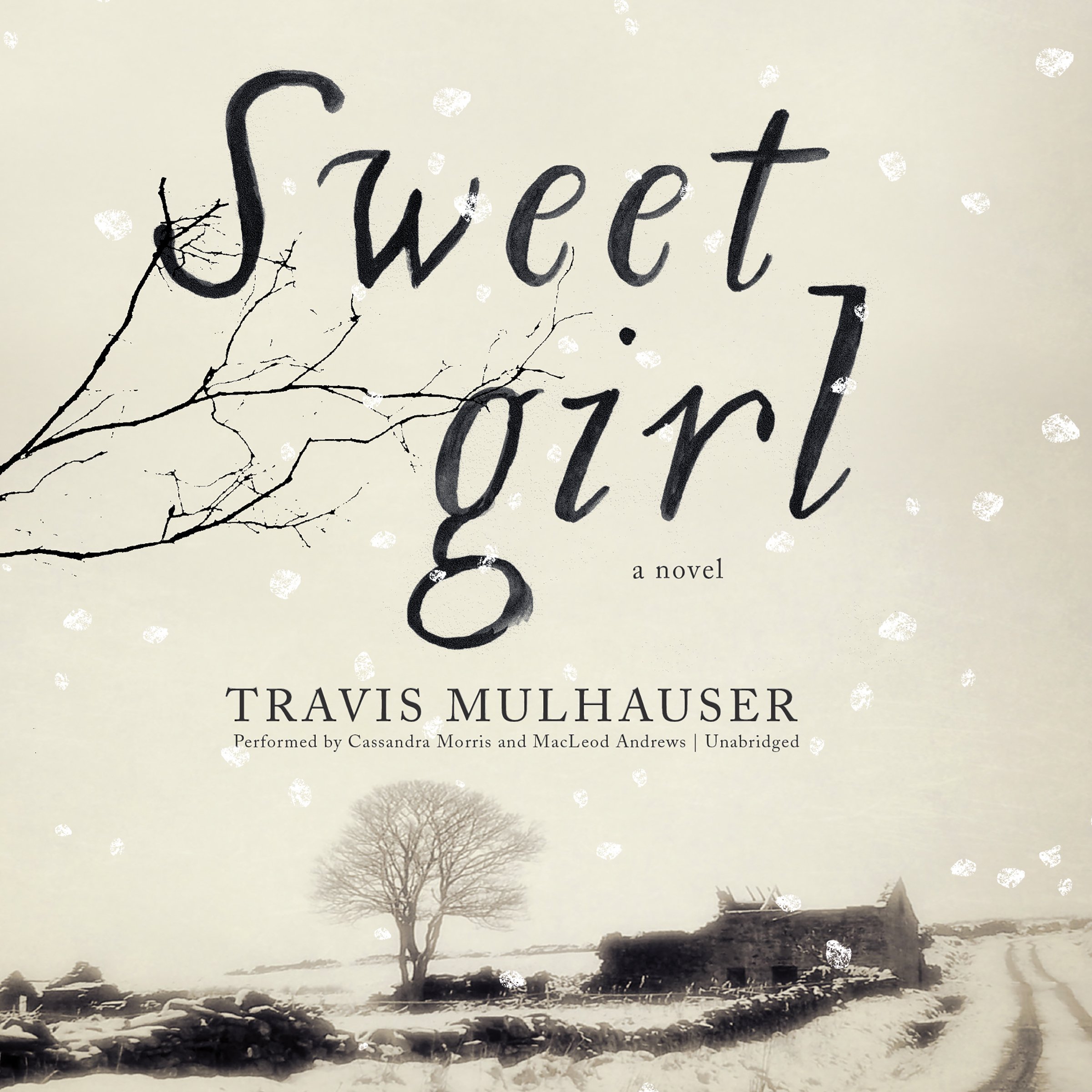I fell in love with Ugly Duckling Presse after seeing / reading / holding Christian Hawkey’s Ventrakl (2010), a book that is as lovely to look at as it is to read, simple in design yet rich and powerful in content. And now, after having digested Aase Berg’s Transfer Fat, translated by Johannes Göransson, my love has turned to lust, and I’m already salivating over the idea of reading more and more from Ugly Duckling Presse. In the meantime, before I empty my pockets for UDP books, Johannes Göransson graciously agreed to take some time with us to talk about this bull-stampeding book Transfer Fat.
 MB: Transfer Fat is your third translation from Aase Berg, following Remainland (Action Books, 2005) and With Deer (Black Ocean, 2009). Can you talk to us a little about how you became connected with Berg, about how this translator / poet relationship began and has developed over time?
MB: Transfer Fat is your third translation from Aase Berg, following Remainland (Action Books, 2005) and With Deer (Black Ocean, 2009). Can you talk to us a little about how you became connected with Berg, about how this translator / poet relationship began and has developed over time?
JG: I started reading Aase’s poetry when I was in college. I came across her work in a Swedish literary journal and immediately I got my grandma in Stockholm to go out and buy me a copy of the book (Aase’s first book, Hos Rådjur). I was really blown away: not only were the poems viscerally powerful but I also felt a deep affinity with her sensibility. It came at an important time for me: Ever since I started writing poetry and other musings in junior high, I had never really doubted my own vision until I got to college and got in contact with the official aesthetics of modernism and contemporary american poetry (whether quietist or experimental), and they had informed me that what I was doing was tasteless, “too much”, unrefined, and that there was no place for me and what I was doing. Aase’s poetry was beautiful, gothic and absolutely entrancing. There was no poetry like it in contemporary American poetry. Her poetry inspired me to be more fierce, more obsessed and possessed, more occultly glamorous without caring for the official standards of taste. I didn’t start translating the book until a couple of years later when I was in MFA school, and then it was to show her work to some of my friends who I knew would like it. When I graduated I continued to translate her work; I contacted Aase and she sent me her next couple of books – Mörk materia and Forsla fett – and I started translating them as well. Forsla fett (Transfer Fat) was the one that really forced me to develop as a translator – to be more creative in my translation practice and to theorize that practice, to think about both the translation act/crime and Aase’s poetry. I tried to get my translations published in the early 2000s and then when I couldn’t, those refusals really made me think about the role of translation in US literary culture and sent me back to the weird writer’s block I was in when I first encountered Aase’s work and that nexus of feelings was the main impetus behind me and Joyelle starting Action Books, which published Remainland: Selected Poems of Aase Berg as one of our first books. Over the years, Aase and I have developed a comorbid relationship as translators and writers. One example I can mention is that through Remainland, an Iraq war veteran became enamored of Aase’s work and asked her to channel a 3-year-old Iraqi girl he had accidentally killed in order to exorcise his traumatic feelings about it; she did and the resulting poem is in her fifth book, Loss, which was published a few years ago. Loss is the Swedish title (in Swedish it’s what you yell at a dog when you want it to let go of something, but it obviously invokes the English word as well, as part of the book takes place in the US).
MB: Transfer Fat works on the ‘deformation’ of language, a process you explain in the translator’s note as Berg’s use of puns, near puns, connotations, rhythms, and other complicated linguistic machinery to create work that re-renders and evolves language. This, in turn, affects the translation, which you describe thusly:
Rather than writing a “faithful” translation of a text so unfaithful to its own native language, I hope to bring into English this unfaithful translation ambience, this language fat.
In doing this ‘unfaithful’ translation, how frequently were you in contact with Berg to clarify or define or guide the translation and, likewise, how often was the translation built upon your own gut reaction / linguistic interaction with the text, outside of Berg’s influence?
JG: Aase and I email quite a bit while translating. We have a similarly “unfaithful” view of poetry to begin with, so it’s fun – neither one of us are really interested in being correct or official in our writing, so it’s really about possibility, mutation, infection. Sometimes I’ll make mistakes but Aase’s will want to keep them because she likes the ways the mistakes open up the poems (but mostly I’m more “faithful” than she is, and I’ll “correct” it!). I should say that when I use a word like “unfaithful” I could just as well have used a word like ultra-faithful. I don’t mean to suggest a sloppiness or casualness. I read her texts incredibly closely. Sometimes so closely that my readings become insanely close; the closeness creates a kind of distance, or disorienting, defamiliarizing.
MB: The idea of language as a disorienting illusion also seems to connect directly to your own writing, specifically in works like Entrance to a colonial pageant in which we all begin to intricate where language is definitely at ‘play’. How much does your translation work of a poet like Berg impact or inform your own writing?
 JG: Translation itself has a big influence on my view of writing. Or perhaps I should say “bilingualism” has a lot of influence on my work. I love the puns and occult connections generated by languages conglamorating and intersecting. I love the strange echoes and the corridors that open up in source texts and target languages and target practices. My book Pilot (Fairytale Review Press, 2008) was directly resulting from having spent years translating poetry and working as a professional translator: I wanted to do translations that were so irregular/occult that they couldn’t even be called translations anymore; I wanted to write-translate; I wanted to create a text infected by its own foreignness, a mobius strip, a ridiculous body. (It’s also about getting a child… strange demonic child who nearly killed her mother and herself getting born. ). I’m not sure if “illusion” is a word I would use – it perhaps exposes the illusion of correctness and certitude that goes along with monolingualism- since “illusion” suggests that there is a true account contrary to art. That’s I think the least intersecting way of viewing art, and it’s very common in a wide spectrum of poets: the idea that art interferes or distorts sincerity, realness etc. Art is always there. When poets attempt to write poetry that is not artful, all they accomplish is a style of style-less-ness. But to get back to your question: Yes, Aase’s work has certainly influenced not only my own ideas of translation and language but also, thusly, my own writing.
JG: Translation itself has a big influence on my view of writing. Or perhaps I should say “bilingualism” has a lot of influence on my work. I love the puns and occult connections generated by languages conglamorating and intersecting. I love the strange echoes and the corridors that open up in source texts and target languages and target practices. My book Pilot (Fairytale Review Press, 2008) was directly resulting from having spent years translating poetry and working as a professional translator: I wanted to do translations that were so irregular/occult that they couldn’t even be called translations anymore; I wanted to write-translate; I wanted to create a text infected by its own foreignness, a mobius strip, a ridiculous body. (It’s also about getting a child… strange demonic child who nearly killed her mother and herself getting born. ). I’m not sure if “illusion” is a word I would use – it perhaps exposes the illusion of correctness and certitude that goes along with monolingualism- since “illusion” suggests that there is a true account contrary to art. That’s I think the least intersecting way of viewing art, and it’s very common in a wide spectrum of poets: the idea that art interferes or distorts sincerity, realness etc. Art is always there. When poets attempt to write poetry that is not artful, all they accomplish is a style of style-less-ness. But to get back to your question: Yes, Aase’s work has certainly influenced not only my own ideas of translation and language but also, thusly, my own writing.
MB: There is also, at least in my reading, a link between Berg’s recent English translations and other new and glorious poetic works – for example, Joyelle McSweeney’s Percussion Grenade (Fence Books, 2012) – and I wonder how you might view Berg in terms of her influence on our contemporary poetic landscape?
JG: Soon after I published the poem “Blubber biter” (from Transfer Fat) in the journal Circumference, I noticed all my friends started writing blubber poems. So weird things like that happen due to translation – the “blubber” comes out of a myopically “faithful” translation of the Swedish word for “killer whale”, “späckhuggare”, which is a compound word consisting of the words for blubber and biter. But this to me suggests a more interesting model of influence than “influence”, one that allows for all kinds of secrets opened up in the “transfer” of signifiers. Berg is obviously a very famous and influential poet in Sweden (her latest book just won one of the biggest awards over there) but she’s not as acclaimed in the US, in part because she’s a foreign poet (and they seldom if ever achieve official recognition form the US establishment) and partly because her work is too grotesque and gothic and visceral for the taste standards here. Nevertheless, a lot of people (mostly younger) tell me her poems have transformed their own writing, which suggests she is just beginning to have a wider influence on US literature. Presses and journals are asking me for the translations, so that’s a big shift already.
MB: Lastly, in your translator’s note for Transfer Fat you reference Berg’s next book Uppland (Swedish edition, 2005). Can you tell us when and where we can look forward to that next book? And will it – we hope – be published in a Göransson translation?
JG: Not for a while. I’m just finishing her second book, Dark Matter, which Black Ocean will publish in the fall. After that I’m taking a break from translation for a while. But Uppland is Joyelle’s favorite Aase book, and we occasionally translate it for fun together, so we might do the whole book in the future. But even after that, Aase’s had two books of poetry and a young adult novel and a book of essays. So I’ve got my work cut out for me.
If you want to tumble down a rabbit-hole of language that is choked with whales and fat and brilliance, pick up a copy of Transfer Fat right now. You can purchase your copy direct from Ugly Duckling Presse here, & read more from / about Johannes Göransson here.



